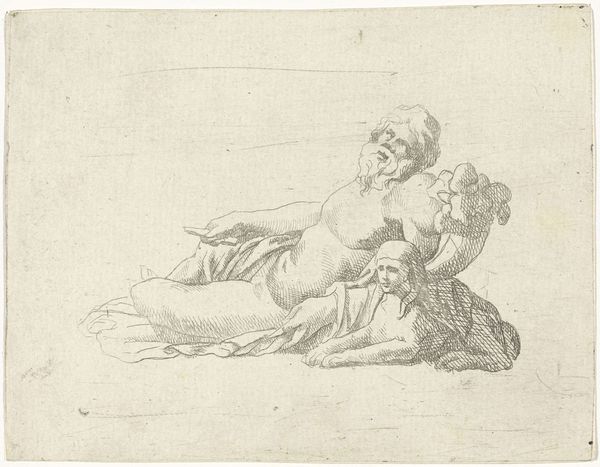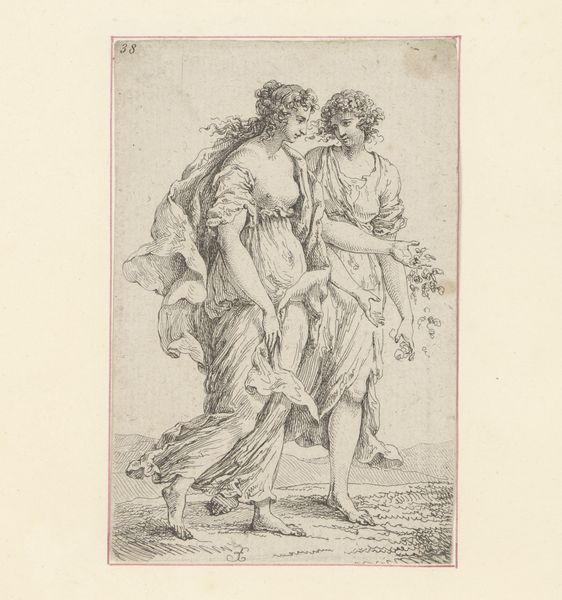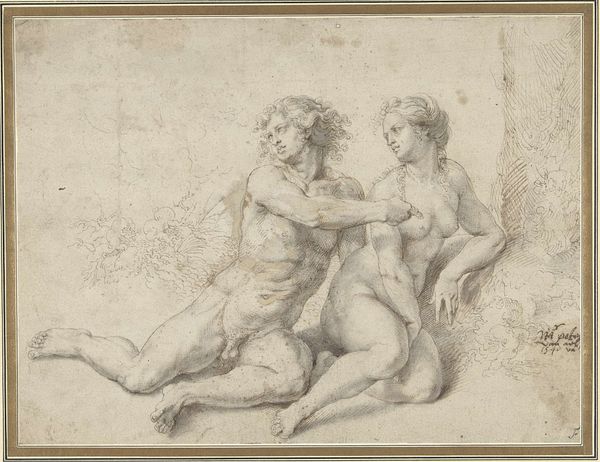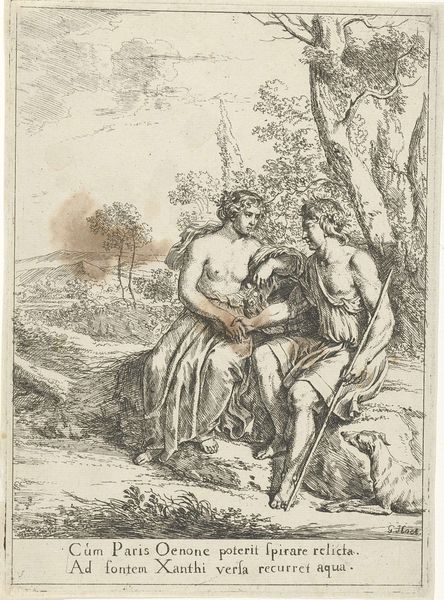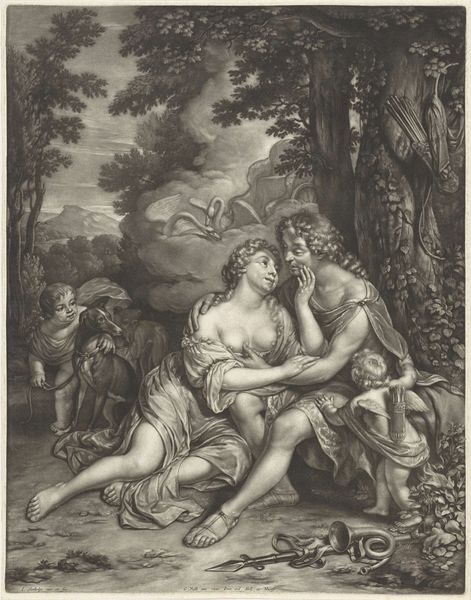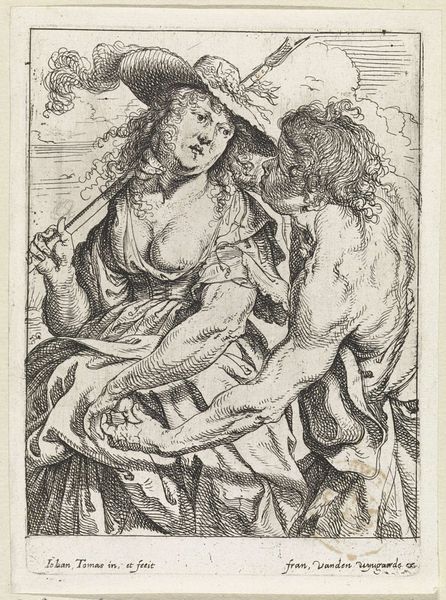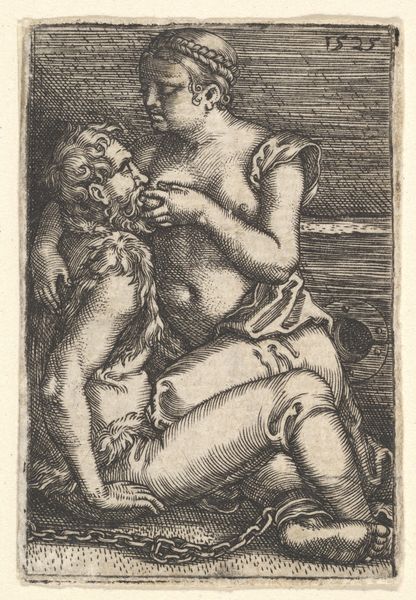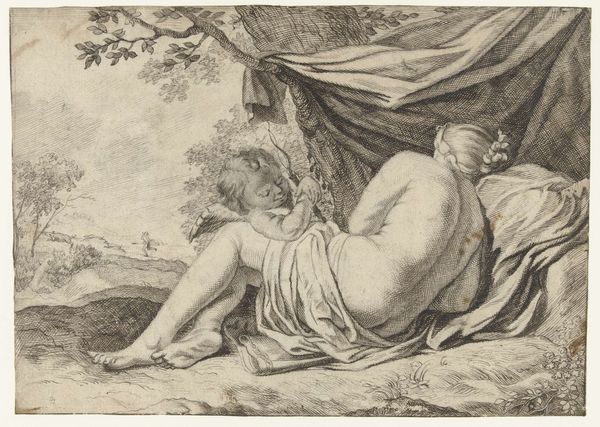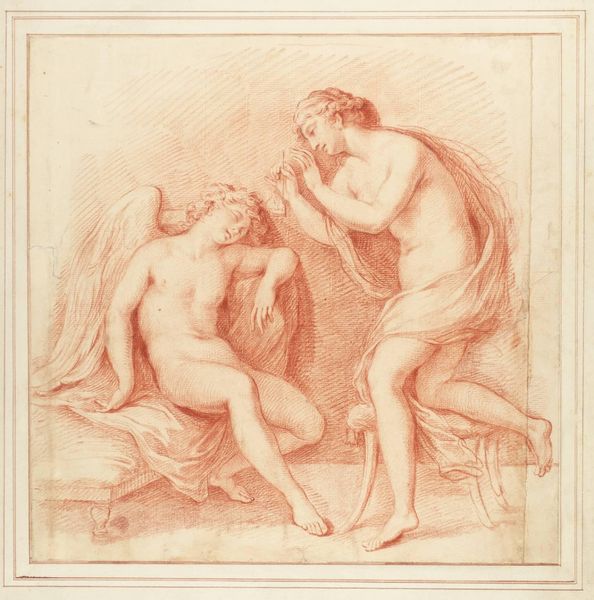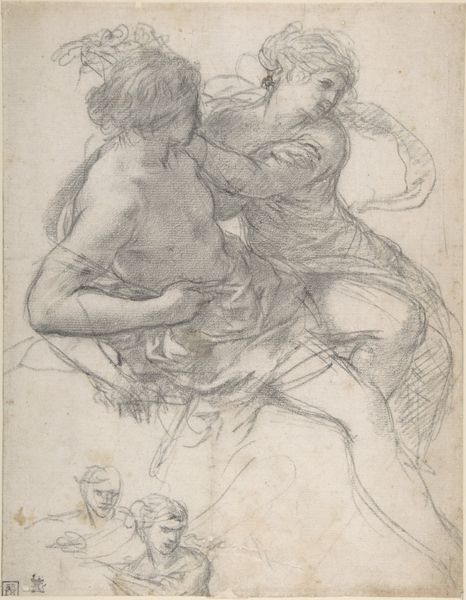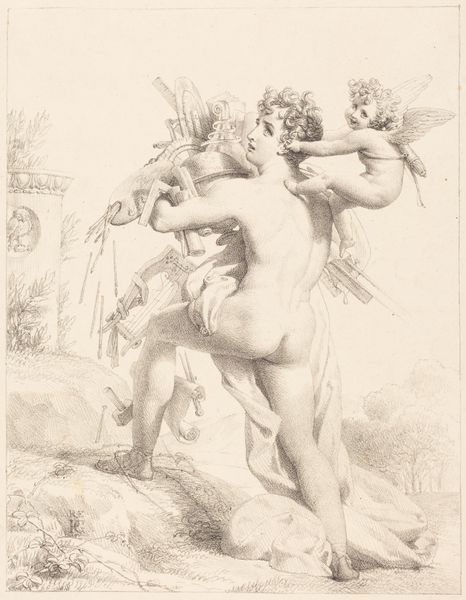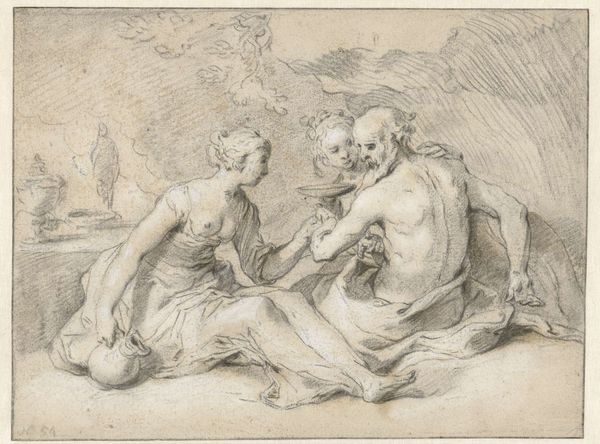
drawing, pencil
#
portrait
#
pencil drawn
#
drawing
#
neoclacissism
#
charcoal drawing
#
figuration
#
pencil drawing
#
romanticism
#
pencil
#
portrait drawing
#
history-painting
Copyright: Public Domain: Artvee
Curator: This delicate pencil drawing, “Orpheus and Eurydice,” dates to around 1817 and is attributed to Jacques-Louis David. Editor: My initial impression is one of poignant melancholy, despite the rather restrained neoclassical style. The stark lines convey such vulnerability, especially in Eurydice’s posture. Curator: David was, of course, a master of Neoclassicism, and in this work, even though it's “just” a drawing, you see him returning to themes of classical antiquity. It makes me wonder about the materials he would have used, sourced, and what the paper manufacture would have been like. What informed his pencil selection at this later point in his career? Editor: Absolutely. And this moment he’s chosen – Orpheus gazing longingly, eternally losing Eurydice. The image of the lyre, a potent symbol of music, art, and grief… it resonates through time. What about David's political associations after the Revolution? Curator: That's a fair point! Think of this as a study or smaller project executed in exile – its intimate scale and medium directly reflect these changing production circumstances. Drawing materials would have been portable, cheap to obtain and work anywhere while continuing working, even outside France. It would have been informed in materialist terms because it allows for making do in new material conditions. Editor: It adds another layer, doesn't it? The artist exiled, grappling with loss... much like Orpheus himself, forever separated from his love. Look at the use of light and shadow, too – notice the way it accentuates their physical and emotional distance. Curator: Exactly! From a materialist standpoint, the layering reveals the production steps in the work. It also shows an evolution away from grand allegories typical in academic painting and back towards something like intimacy expressed by means of a modest material, in other words, graphite on paper. Editor: What strikes me now is that the story, a testament to love, loss and ultimate failure to reclaim the other. Maybe it represents his political and creative ideals, finally unattainable? It feels heavier now. Curator: Indeed! Now you're seeing the true essence of the piece! Editor: And I'm seeing David's understanding, visually represented via paper and lead. Thank you!
Comments
No comments
Be the first to comment and join the conversation on the ultimate creative platform.
